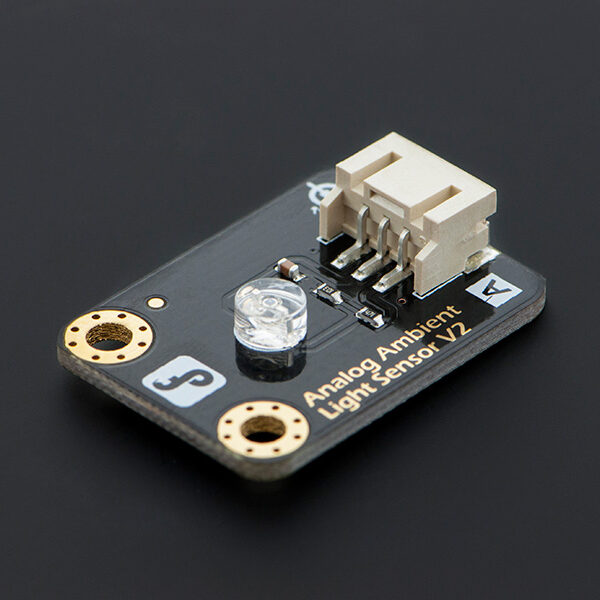-
 Fast Shipping
Fast ShippingGet the Priority Shipping on Prepaid Orders
Prepaid Orders
-
 Normal Shipping
Normal Shipping Get Normal Delivery (Surface) with Cash On Delivery
COD Orders


₹405.75 (Including tax)
Discount per Bulk Quantity
| Quantity | Discount | Price |
|---|---|---|
| 5 - 10 | 5% | ₹385.46 (Including tax) |
| 11 - 20 | 8% | ₹373.28 (Including tax) |
| 21 - 40 | 10% | ₹365.17 (Including tax) |
| 41 - 100 | 12% | ₹357.05 (Including tax) |
Out of stock
No worries! Enter your email, and we'll let you know as soon as it's back in stock.
Get the Priority Shipping on Prepaid Orders
Prepaid Orders
Get Normal Delivery (Surface) with Cash On Delivery
COD Orders
1 x Analog Ambient Light Sensor
1 x Analog Cable
| Input Voltage (V) |
3.3~5 |
|---|---|
| Illumination range(Lux) |
1 to 6000 |
| Responsive time(us) |
15 |
| Interface |
Analog |
| Length (mm) |
30 |
| Width (mm) |
22 |
Only logged in customers who have purchased this product may leave a review.
Shipping and Delivery Policy
1. Shipping Process:
2. Shipping Charges:
3. Order Tracking:
4. Delivery Address:
5. Delivery Issues:
6. No Return Policy for Opened/Soldered Products:
7. Refund Policy:
Out of stock
Out of stock
Out of stock
Out of stock
Out of stock
| Model No. |
AS7262 |
|---|---|
| Product Type |
6-channel Spectral Sensor (Spectrometer) |
| Operating Voltage(V) |
3.3V or 5V |
| Interface |
UART or I²C slave digital Interface |
| No. of Channels |
6 spectral channels (450 ,500 ,550 ,570 ,600 ,650nm) |
| ADC |
16 bit |
| Operating Temperature (°C) |
-40 to 85 °C |
| Dimensional Accuracy (mm) |
4.5mm x 4.7mm x 2.5mm |
| Weight (g) |
3g |
Out of stock
Out of stock
Out of stock
No account yet?
Create an Account
Reviews
Clear filtersThere are no reviews yet.